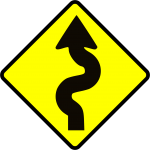 In an effort to extend students’ skills with primary documents, offer an arrhythmic assessment in the midst of a series of short course units, incorporate technology, and meet content expectations, I devised a project-based assessment for a unit that introduced students to the early years of the Cold War (1945-1960). As has typically been the case when I have facilitated a task like this, our class experienced mixed results. I would definitely incorporate this project again, but I would like to share some of my takeaways – partly so I don’t allow frustration with imperfect results to shape future decisions.
In an effort to extend students’ skills with primary documents, offer an arrhythmic assessment in the midst of a series of short course units, incorporate technology, and meet content expectations, I devised a project-based assessment for a unit that introduced students to the early years of the Cold War (1945-1960). As has typically been the case when I have facilitated a task like this, our class experienced mixed results. I would definitely incorporate this project again, but I would like to share some of my takeaways – partly so I don’t allow frustration with imperfect results to shape future decisions.
The base information for the activity (with a link to a Google Doc that students were to copy and use as a collection tool) is found here: https://www.smore.com/9pj2g-unit-16-cold-war-am-history-10 . With this and an introductory video I made using Tellagami – both first-time tools for me – I was modeling technological experimentation for my students. I hoped to cultivate a sense of adventure with these. On our first day of working with this material, I shared some basic vocabulary terms as well as the background information pertinent to the start of the Cold War as the cooperating Allies concluded their efforts in World War II.
Using the resources of Stanford History Education Group , I offered students four documents to help them begin this process of gathering primary documents to support their conclusions. Students were encouraged to collaborate in their document work through prompts about the Novikov Telegram and Truman Doctrine. In sharing the letter from Henry Wallace to President Truman, I needed to underscore the postscript that Wallace was asked to resign after writing this letter. While we have been working with primary sources throughout the year, a number of students still need guidance on recognizing subtleties. I need to emphasize the notes that primary documents often provide more intentionally in the future – in a manner similar to emphasizing the need to read directions.
While most of my students have become competent at interpreting primary documents, I overestimated their ability to distinguish primary sources from secondary ones. While the Stanford resources applied well to the first two unit goal questions, I recommended other websites https://bitly.com/bundles/pstrukel/1 to use as well. Students had access to the link as well as a QR code to direct them to this collection site. In first drafts of work submitted, students occasionally used one of the base sites as their primary source and quoted an introductory paragraph from it. “But I found it in the Bitly Bundle!” was exclaimed in defense of this maneuver; this led to a review session of how historians tell the story versus a more direct account anchored in the time period that sheds light on what happened. It would have been a worthwhile investment to exercise primary document recognition skills prior to having students tackle this work.
Students were not as adept at Google Doc sharing as I had anticipated. Reminding that the default setting keeps a document private was a daily announcement. An analogy that seemed to resonate with a number of students was that giving me a link without opening access to the document was like asking me to open a padlocked locker without providing a combination.
Positive aspects of this project included the number of skills that needed to be applied. From primary document recognition to communicating through a presentation tool, students were asked to create meaning and connect their ideas to the content. An example of an exceptional student product for the third unit goal is provided here: http://www.thinglink.com/scene/505796041249914882 . This student had used Thinglink in the past, and it was such an awesome feeling to see how she used this tool to convey her understanding of the content and application of primary sources! While I occasionally smile upon reading a solid essay, I rarely experience a “wow” to the degree that I did upon evaluating this work.
The interactive nature of the “turn-in” document was positive as well. Asking students to communicate what they wanted me to notice or what they liked about their work was not merely a nice gesture, but it asked them to reflect upon their work. I feel like I don’t do this enough and, with about 150 students, it opened up the opportunity for conversations that simply can’t occur in the confines of a class period. Students appreciated the chance to improve their work and use the comments that I offered. On the second day dedicated to this project, I showed students how I had commented on a student’s Prezi using the turn-in document. There was an audible gasp in one of the class periods as they noticed that I had directly remarked on a request a student had made in her reflection column. “You mean that we can ask you if we think we did something wrong and then we’d have a chance to correct it?” Yes, that still counts as learning.
Mini-lessons on the processes and content at the beginning of each class period that served as a work session helped students. Since this unit introduced the Cold War, I knew that I had the opportunity to clarify widespread misunderstandings in future units that examine the Cuban Missile Crisis and Vietnam War. Thus, the foundation of understanding could be guaranteed while the structures produced from the foundation could certainly be varied – at least over the course of this unit.
The scoring rubric performed as I hoped. It rewarded deeper thinking and synthesis. It offered a “C” to a student who capped his/her work with only one primary source on a unit goal. Because I use standards-based grading, the unit goal scores were recorded on a spreadsheet and a trend score was determined prior to establishing an overall percentage grade on the work. On a typical unit test, a student who does not “test out” of a unit goal, or standard, earns a score of “NYC” for “not yet competent” on the unit. This means that the student’s grade stands as 50% until the lack of understanding is remedied. A similar principle was applied on this project since it served as a unit assessment: NYC conditions- Only secondary sources are used. Only a student’s interpretation of the question is used. No citations are provided. Inaccuracies are frequent. Unfortunately, some students carried this as their score on this project as the calendar page flipped to fourth quarter. As an instructor, this is part of the eternal struggle; is it best to let unfinished work haunt a student for an entire grading period or to pinch a student’s grade at the time of a grading period? Class-time work on this project concluded on March 28. Third quarter ended on April 4. Some students will opt to finish this project in a month that rhymes with “hey” for any number of reasons – just as is sometimes the case when a student is absent in the days prior to a test and postpones making it up until feeling completely ready.
This project provided many twists and turns for students and for the instructor implementing it for the first time. This wasn’t the safest way to assess my students’ understanding of the early stages of the Cold War. It wasn’t the easiest way to determine the degree to which they grasped the struggle between the superpowers. This project didn’t lead to a mundane weekend of correcting forty test questions. It stretched my students and me. It amplified the need to address supplementary skills over the course of the year. It showcased synthesis and rewarded persistence. It required students to tell a story anchored in historical documentation. As I reflect on it, it is essential to celebrate these victories rather than opting to take the beaten path of traditional assessment all of the time. I owe this to my strongest students and the ones who found ways to get lost on this winding path cannot be my impetus for selecting instructional methods. If I only act in accordance with the students who produce the least, I do a disservice to those who are willing and able to extend themselves. It is difficult to accept how often a desire to give all students a chance to succeed leads me to minimize my expectations.

